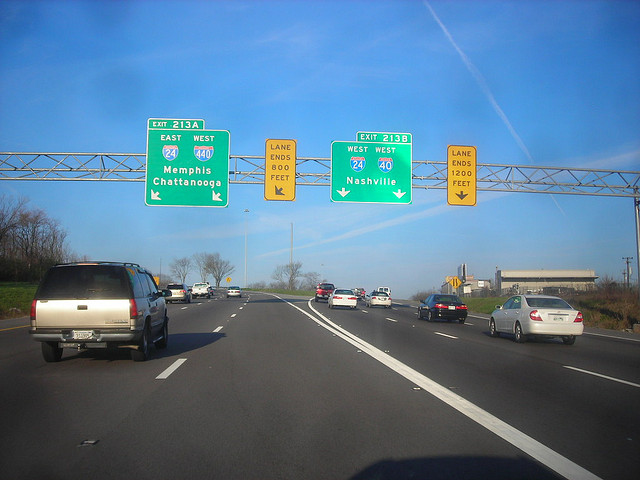Traffic death count signs – do they work?
Cities throughout the U.S. have increasingly been posting traffic death count signs on major highways, serving as a striking reminder of the dangers faced on the road – and as a warning to take caution when behind the wheel.
WBEZ, a popular Chicago radio station recently reported on the traffic death count signs located on Chicago’s highways as well as throughout Illinois. The Illinois signs display the current number of fatalities related to a motor vehicle – including cars, motorcycles, buses, trucks and others – on digital signs, which the state has been equipped with since the 2000s. The signs were initially installed for informing drivers about emergency conditions. The Illinois Department of Transportation began rotating the death count messages along with other traffic alerts and child-abduction warnings after determining that there had been a significant raise in vehicle-related fatalities between 2012 and previous years.
The Texas Department of Transportation began regularly advertising traffic death numbers last year on the over 700 digital message boards seen on state highways. Though the number of fatalities in Texas crashes had actually declined between 2003 and the time the signs were introduced, the state’s transportation department spokesman Mark Pettit told CBS: “When you’re losing as many as 250 people a month we just find it ridiculous and we want to make sure we do everything we can to raise awareness.”

Traffic calming signs like these can remind drivers to keep to the speed limit – or they can inure them to danger. Via roadtrafficsign.com.
Supports of the sign program acknowledge that it is difficult to get an accurate measurement of their impact on driver behavior. WBEZ reported that John Webber, Interim Director for the Division of Traffic Safety for the Illinois transportation department, said that the state experienced a general decrease in fatalities, from the time they began posting the fatalities count in summer 2012. However, Webber also admits that the decrease cannot be attributed unequivocally to the presence of the death count signs.
Yet, traffic deaths in Illinois underwent a slight decrease in the second half of 2012 – right after the sign campaign launched. Specifically, department of transportation records show that from the start of the sign program on July 5, 2012 until the end of the year, there were 478 fatalities. 2011 saw 500 fatalities over the same period. State Transportation Secretary Ann Schneider told The Chicago Tribune, “I can’t point to that and say [the signs were] the reason. But obviously, raising awareness helps us in that campaign.”
Tennessee, which recently saw a 23 percent drop in traffic related fatalities, implemented the traffic death count signs in April of last year. Officials attribute the decrease to increased seatbelt enforcement and more DUI arrests. Debate surrounded the digital sign program back in December, when the state counted an increase in traffic deaths. Yet state transportation official Kendell Poole called the signs a “victory for saving lives.” The program has continued this year.

Signs that keep count of traffic fatalities may or may not have made Tennessee’s highways safer. Via dougtone; licensed under Creative Commons.
The traffic death count sign programs costs nothing to maintain in states already outfitted with digital billboards, like those used to spread awareness throughout Illinois. With widespread support and little investment, these safety awareness campaigns seem to be a win-win in the often contentious traffic management landscape.
Category: Automotive, News & New Products, Road safety















